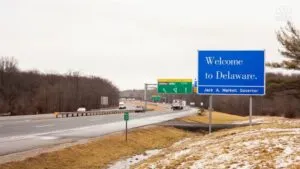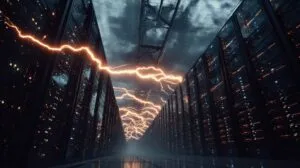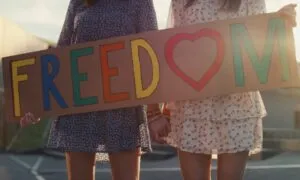A single night in New York City sparked an awakening. In the early hours of June 28, 1969, a routine police raid at the Stonewall Inn provoked a response unlike any other.
Patrons, neighbors, and passersby stood up and said, “Enough.” That moment lives on as a turning point in the fight for LGBTQ+ rights in the United States.
Progress has spanned decades, involving legal battles, grassroots activism, shifting societal attitudes, and a collective drive for recognition.
Moments of triumph and heartbreak have marked every step forward, illuminating how far the community has come and how far there still is to go.
Table of Contents
ToggleStonewall Riots

The Stonewall Inn was a hub for individuals who often felt unwelcome elsewhere. Police raids on LGBTQ+ establishments were common, leading many patrons to brace themselves for yet another humiliating encounter.
On that late June night, an altogether different reaction emerged. Fed-up New Yorkers pushed back, stirring a rebellion that stretched across six days. Protests, scuffles, and public demonstrations filled Greenwich Village.
Some consider it the birth of a transformative era, since it ignited a broad movement against the mistreatment of gay, lesbian, bisexual, transgender, and queer individuals.
Resilience in the Face of Raids
Clubs and bars ran by or for LGBTQ+ patrons often found themselves subject to harassment. Patrons were regularly arrested for alleged “indecent behavior,” which could include wearing clothing perceived as belonging to a different gender.
The extent of intimidation was severe, yet the uprising in 1969 showed a community willing to defend its existence, even with limited resources.
A shift from silence to action
Demands for human rights were made loud and clear. People took to the streets, held signs, and voiced a determination that signaled the dawn of a new wave of activism.
No longer content to conceal identities or retreat into private social circles, people rallied behind leaders who possessed bold visions of a better tomorrow.
Early Activism and Organizations

Before Stonewall, attempts at advocacy were not nonexistent, but many were less visible. Unofficial gatherings formed to challenge restrictive laws.
Some groups strove to change public opinion using discreet approaches, hoping to appear “respectable” in a society that rejected them.
Society for Human Rights
Founded in Chicago in 1924 by Henry Gerber, this group stands as one of the earliest documented gay rights organizations in the nation.
It was short-lived, though it planted a seed that activists would later nurture. Gerber, inspired by movements in Germany, sought a space where gays and lesbians could unite around shared struggles.
Mattachine Society and Daughters of Bilitis
During the 1950s and 1960s, these organizations emerged with aspirations of legal reform and societal acceptance. Their approach often emphasized assimilation.
Members believed that blending into the dominant culture might be an effective means to minimize hostility. Conservative tactics were standard, partly as a response to the relentless scrutiny from law enforcement and government agencies.
Post-Stonewall Mobilization

A big transition occurred after Stonewall. Freedom marches, previously considered too risky or radical, started popping up across major cities.
The Gay Liberation Front (GLF) and the Gay Activists Alliance (GAA) brought fiery calls for civil rights, acceptance, and justice.
June 28, 1970—exactly one year after the Stonewall uprising—witnessed the first Pride march on Christopher Street, forever changing the visibility of the LGBTQ+ community.
Gay Liberation Front and Gay Activists Alliance
GLF’s broad goals encompassed freedom not only for LGBTQ+ individuals but for other oppressed groups as well. Members joined forces with anti-war and Black liberation movements.
The GAA eventually branched off to focus more squarely on legislation and public policy, employing “zaps,” a form of direct action protest.
Pride Emerges as a Global Phenomenon
What started in New York spread to cities like Los Angeles, Chicago, and San Francisco. Parades and marches commemorated that initial uprising, creating a lasting tradition.
Over time, Pride evolved into a celebration of love, identity, and solidarity—while never losing sight of the inherent political edge involved in protesting discrimination.
Major Milestones and Ongoing Victories
The LGBTQ+ struggle for equal treatment has often landed in courtrooms and legislative chambers. Laws shaped everyday experiences, influencing the ability to love openly, serve in the military, or seek employment without fear.
Decriminalizing Same-Sex Intimacy
For years, sodomy laws criminalized consensual acts between adults of the same gender. Police sometimes used such legislation to arrest or intimidate, creating a climate of terror in many communities.
A legal turning point arrived in 2003 when the U.S. Supreme Court struck down remaining sodomy statutes through Lawrence v. Texas, as per Supreme Court Justia. That judgment removed the looming threat of legal punishment, heralding a new chapter in personal freedom.
Marriage Equality
Defense of Marriage Act (DOMA), 1996
This federal law barred the government from recognizing same-sex marriages, effectively shutting couples out of benefits such as spousal health coverage or Social Security survivor’s benefits.
Key Supreme Court decisions
- United States v. Windsor (2013): Important sections of DOMA were invalidated, allowing federal recognition of same-sex marriages in states where it was already legal.
- Obergefell v. Hodges (2015): Legalized same-sex marriage nationwide, granting couples across the country the same recognition as their heterosexual counterparts.
Serving in Uniform

In 1993, the “Don’t Ask, Don’t Tell” policy prohibited openly gay individuals from joining or serving in the military. Under that rule, thousands were discharged, forced to conceal key aspects of their identity, or risk losing careers.
The policy’s repeal in 2010 allowed gay, lesbian, and bisexual service members to serve openly. Later developments extended the right to serve to many transgender individuals, though that specific area has faced additional hurdles over the years.
Protection in the Workplace and Beyond
The Supreme Court’s 2020 decision in Bostock v. Clayton County affirmed that Title VII of the Civil Rights Act of 1964 prohibits employment discrimination based on sexual orientation or gender identity.
Numerous advocates celebrated the decision, though many pointed out that housing, education, and public accommodations still lack comprehensive protections in certain parts of the country.
Recent Developments
According to Them, in June 2024, President Biden issued pardons for veterans convicted under former military laws that banned gay sex, addressing historical injustices faced by LGBTQ+ service members.
Representation and Evolving Societal Attitudes
A movement grows stronger when it wins hearts and minds, not just court battles. LGBTQ+ individuals needed cultural validation, and that emerged in several critical ways.
Medical stigma begins to crumble
The American Psychiatric Association removed homosexuality from its list of mental disorders in 1973, as per History. That step had a ripple effect on healthcare providers, mainstream media, and the public.
No longer labeled an illness, gay and lesbian identities were reframed in a more neutral or even positive light.
Media highlights and storytelling
Representation on television, film, and in literature evolved dramatically. Characters once relegated to jokes or stereotypes became more authentic, layered, and relatable.
Shows like Will & Grace and dramas like Pose offered glimpses of LGBTQ+ life that challenged old prejudices. Cinema also played a part, with projects like Milk and The Kids Are All Right portraying same-sex relationships in a normalized way.
Musicians and athletes breaking barriers
Public figures, from professional athletes to pop icons, have shown that LGBTQ+ individuals belong in every corner of society.
Megan Rapinoe’s outspoken advocacy and successes on the soccer field, alongside Carl Nassib’s landmark status as an openly gay NFL player, highlight shifting attitudes in arenas once deemed rigidly conservative.
Health and Mental Wellbeing

A deeper awareness of mental and physical wellness emerged as activism expanded. Advocacy groups led by volunteers and healthcare professionals established resources tailored to those often ignored by mainstream medicine.
HIV/AIDS – A Crisis That Shaped Public Perception
When HIV/AIDS reached crisis levels in the 1980s and 1990s, LGBTQ+ communities bore the brunt. Activists, such as those in ACT UP (AIDS Coalition to Unleash Power), demanded life-saving treatment, challenged government inaction, and galvanized public sympathy.
Ongoing progress in antiretroviral therapies made the disease more manageable, though disparities continue for marginalized individuals who lack healthcare access.
Support Systems and Specialized Clinics
More inclusive clinics began offering hormone therapy, counseling, and informed staff who were aware of the specific needs of lesbian, gay, bisexual, transgender, and queer patients.
Barriers still remain, including insurance discrimination, limited coverage for transition-related care, and a shortage of culturally competent providers, but growth in inclusive care stands as a crucial victory.
Intersectionality & Embracing All Identities

Equality efforts have often overlapped with movements championing race, gender, and class equity. Earlier activism rarely recognized the unique obstacles encountered by people of color, individuals with disabilities, or those from low-income backgrounds.
Over time, a broader scope developed, guided by leaders who insisted on a holistic approach to human rights.
Trailblazers like Marsha P. Johnson and Sylvia Rivera
Both were transgender women of color and pivotal forces in the Stonewall Riots. Their contributions, once minimized, are finally receiving recognition.
Initiatives that honor their legacies have brought attention to the disproportionate violence that trans women of color experience.
Organizations emphasizing multiple identities
Groups such as the Audre Lorde Project spotlight intersectional advocacy for queer people of color. Events like Black Pride create spaces where participants honor multiple facets of their identities without leaving any behind.
Emphasis on cross-issue alliances highlights the ways racism, homophobia, transphobia, and economic inequalities intersect.
Push for Anti-Discrimination Measures
Efforts to outlaw discrimination in employment, housing, and education have seen incremental success over the decades.
Some states boast comprehensive anti-discrimination laws, while others remain stalled or actively roll back protections. Key legal battles have centered on religious exemptions, public accommodation restrictions, and health coverage limitations.
The path to uniform federal protection
Many believe a nationwide law remains essential. The Equality Act aims to secure inclusive protections under civil rights statutes, covering sectors that still leave LGBTQ+ individuals vulnerable to unfair treatment.
Ongoing campaigns and lobbying efforts work to convince lawmakers that true equality demands legal backing in every facet of daily life.
Bostock v. Clayton County and beyond
The Supreme Court’s ruling that Title VII protects gay and transgender individuals in employment was a watershed moment. Yet serious gaps remain in areas like public services, credit, and health services.
Activists persist in pressing for bills that cover all aspects of life, ensuring no one faces denial of basic rights due to sexual orientation or gender identity.
The Influence of Religion and Faith Communities

Faith traditions in the U.S. feature divergent views regarding LGBTQ+ acceptance. Some churches have extended open arms, ordaining LGBTQ+ clergy and offering marriages, while others staunchly refuse any acknowledgment.
Debates often emerge around “religious freedom” and the scope of nondiscrimination laws.
Allies in religious settings
Denominations like the Episcopal Church, United Church of Christ, and Reform Judaism have created inclusive policies.
Clergy in those faiths might officiate same-sex weddings or speak openly about LGBTQ+ inclusion, contributing to more positive messaging that reaches millions of parishioners.
Religious exemptions and debates
Certain groups argue that serving LGBTQ+ customers or clients goes against their convictions, creating complex legal questions about discrimination versus personal faith.
Activists regularly challenge or defend legislation addressing how far religious exemptions may go in overriding public accommodation or employment non-discrimination guidelines.
LGBTQ+ Youth
Young members of the community often contend with shame, bullying in schools, family rejection, and greater risk of homelessness. Organizations founded to support vulnerable teenagers have emerged over time.
Hotlines, counseling services, and safe spaces fill a vital need, as many adolescents face a precarious path during a stage in life when acceptance and stability are essential.
The Trevor Project and GLSEN
By focusing on suicide prevention, crisis intervention, and research on bullying, these groups amplify the voices of youth.
Anti-bullying initiatives encourage school districts to adopt inclusive policies, set up support groups, and promote staff training that helps educators identify and curb discrimination.
Gay-Straight Alliances (GSAs)
Clubs within high schools allow peers to share experiences, offer mutual support, and advocate for equity.
Some communities oppose their existence, yet countless students rely on such environments to feel safe enough to be authentic.
Transgender Rights Movement
Transgender and gender-nonconforming individuals frequently encounter challenges that go beyond broader gay and lesbian movements.
Misconceptions about gender identity, the cost of transition-related care, denial of services, and acts of violence weigh heavily on many trans folks.
Healthcare concerns
Trans-inclusive care can be scarce. Some states attempt to outlaw gender-affirming medical treatments for minors, forcing individuals to either travel long distances or forgo necessary procedures.
Insurance often imposes hurdles in covering hormone treatments or surgeries, adding another layer of stress.
Visibility and leadership
Public figures such as Laverne Cox and Janet Mock have brought fresh attention to trans issues.
Their ability to speak candidly about lived experiences has contributed to a national dialogue that addresses prejudice, fosters empathy, and urges policymakers to adopt inclusive measures.
Despite forward momentum, high rates of violence against trans women of color remain a tragic reality.
Current Challenges and Future Objectives
Great strides have been made since that pivotal night at the Stonewall Inn. Yet adversity persists. Hate crimes against LGBTQ+ individuals, particularly trans women of color, remain disturbingly frequent.
Certain states consider or pass bills limiting gender-affirming healthcare or restricting access to public facilities. Federal court cases repeatedly threaten to roll back hard-won rights, fueling uncertainty for many.
Global concerns also factor into the fight. In numerous countries, LGBTQ+ communities endure harsh penalties, social ostracism, or even legal punishment simply for living openly. International solidarity can offer hope to those seeking better conditions abroad.
Emerging issues
- Digital privacy and safety: Social media has become a forum for activism. Yet digital harassment and doxxing endanger vulnerable groups, leading to new forms of intimidation.
- Economic injustice: Poverty magnifies vulnerabilities. LGBTQ+ folks often confront higher rates of unemployment, homelessness, and underemployment, making robust anti-discrimination protections vital.
Collaboration among movements
Many LGBTQ+ activists align with labor, environmental, and racial justice causes, recognizing that systemic inequities often affect overlapping communities.
Climate change, for instance, jeopardizes marginalized groups lacking resources to relocate or rebuild after natural disasters.
Hope Forged in Struggle
Stonewall awakened a new sense of collective strength. Angry, fearless patrons saw no alternative but to stand tall, and that stance continues to echo through generations of organizers, lawmakers, and everyday allies.
Rapid transformations in marriage laws, military service, and media representation show that persistence yields results. Momentum flourishes in unstoppable ways when millions refuse to accept second-class citizenship.
Greater acceptance, improved healthcare, and protections in the workplace would have seemed unreachable half a century ago. Yet here they are, pushing society forward step by step.
Dedicated advocates intend to safeguard progress while breaking fresh ground. Battles still loom on the horizon, but love, resilience, and camaraderie shine bright.
References
- supreme.justia.com – Lawrence v. Texas, 539 U.S. 558 (2003)
- them.us – Biden Issues Pardon for Veterans Convicted Under Military Law That Banned Gay Sex
- history.com – The American Psychiatric Association removes homosexuality from its list of mental illnesses
Related Posts:
- Safest Countries in the World in 2025 - GPI…
- 26 Most Dangerous Cities in US - Updated Statistics for 2025
- America's Murder Capitals: A 2025 Ranking of the…
- 10 of the Most Memorable Protests In the U.S. History
- Capital Cities in Europe: Top Destinations For You…
- 10 Iconic Moments in America’s Fight for Civil Liberties








